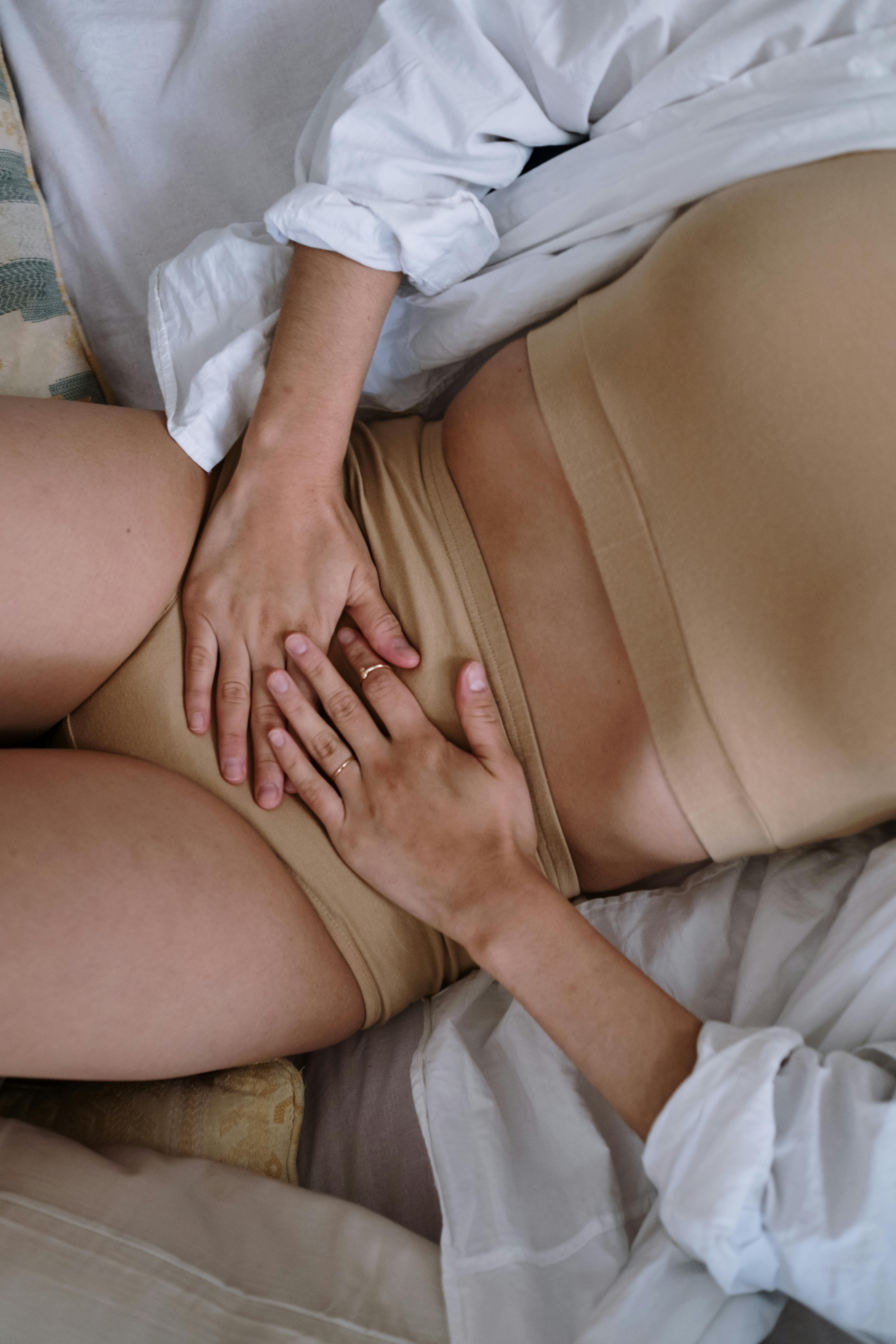Managing PMDD symptoms with an Antihistamine
Using an antihistamine to help manage Premenstrual Dysphoric Disorder (PMDD) symptoms.

A primary care membership for patients who want more. Primary Care. Nutrition. Wellness. All under one roof.
Could Histamine Be Behind Your PMDD Symptoms?
If you’ve been navigating Premenstrual Dysphoric Disorder (PMDD), the severe cousin of PMS, you already know it’s more than just “that time of the month.” Mood swings, irritability, anxiety, fatigue, insomnia, and even migraines can make half the month feel unbearable. While its pathophysiology is multifactorial—linked to abnormal sensitivity to normal hormonal fluctuations—growing evidence suggests histamine intolerance may be an overlooked contributor in some individuals.
The Hidden Link Between Histamine and Hormones
Histamine is a chemical your body naturally produces. You might know it for its role in allergies, but it also acts as a neurotransmitter and plays a big role in digestion, immune regulation, and surprisingly, reproductive hormone balance.
In some people, the body struggles to break histamine down properly. This is often due to low levels of an enzyme called diamine oxidase (DAO) or overactive mast cells (immune cells that store and release histamine). The result is a condition called histamine intolerance, where normal amounts of histamine build up and cause a range of symptoms that look a lot like PMDD.
How Histamine Can Worsen PMDD
High histamine levels might be amplifying your PMDD symptoms in a multitude of ways:
- Mood changes and anxiety: Histamine influences brain chemicals like dopamine and serotonin—both major players in mood regulation. When estrogen rises and falls across your cycle, it can trigger mast cells to release more histamine, creating a cascade of mood symptoms.
- Headaches and migraines: Histamine dilates blood vessels and can be a common trigger for menstrual migraines.
- Digestive issues: Nausea, bloating, and IBS-like symptoms often flare premenstrually and may be due to histamine’s effects on gut motility.
- Sleep disruptions: Histamine promotes alertness in the brain. If levels are high at night, it can make falling and staying asleep harder, especially in the luteal phase.
If this sounds familiar, there may be relief in antihistamines. Antihistamines are typically used for seasonal allergies, but some women with PMDD report significant symptom relief when using them during the second half of their cycle, the luteal phase.
Two types of antihistamines may be helpful:
- H1 blockers like cetirizine (Zyrtec) or loratadine (Claritin) may help with symptoms like anxiety, irritability, insomnia, and skin sensitivity.
- H2 blockers like famotidine (Pepcid) may help target histamine in the digestive tract and may ease bloating, acid reflux, and gut discomfort.
Taken cyclically (starting just after ovulation and continuing until your period starts) antihistamines may reduce the intensity of both mood and physical symptoms.
Natural Alternatives for Histamine Support
There are several natural ways to support histamine balance through a holistic approach as well.
- DAO supplements: Help break down histamine from food.
- Low-histamine diet: Avoid aged cheeses, alcohol, fermented foods, and smoked meats during the luteal phase.
- Mast cell stabilizers: Nutrients like quercetin, vitamin C, and luteolin can reduce histamine release.
- Support estrogen detox: Compounds like DIM, sulforaphane, and calcium D-glucarate can help metabolize estrogen properly, reducing its potential to trigger histamine release.
If your PMDD symptoms are severe and traditional approaches like SSRIs, birth control, or cognitive behavioral therapy haven’t worked, it might be worth exploring histamine’s role.
Some signs histamine could be a hidden factor:
- You get migraines before your period
- You feel worse after eating fermented or aged foods
- You have skin itching, hives, or flushing during your cycle
- Antihistamines help with your mood or sleep during the luteal phase
How The Lanby Care Team Can Support You
At The Lanby, we take a root-cause approach to conditions like PMDD. If you suspect histamine intolerance could be contributing to your hormonal symptoms, our Care Team can help in a multitude of ways:
- Assess for histamine intolerance and hormonal imbalances by reviewing symptoms, medical history, and ordering targeted labs.
- Personalize a nutrition and supplement plan that supports histamine metabolism and estrogen detoxification.
- Guide you through dietary shifts, including how to adopt a low-histamine or anti-inflammatory diet during symptom-prone phases of your cycle, without feeling overly restricted.
- Collaborate with you to optimize prescription and over-the-counter support, including safe cyclical use of antihistamines if appropriate.
- Use symptom tracking tools to monitor patterns across your cycle and dial in interventions that work with your unique biochemistry.
- Provide integrative lifestyle support like stress management, sleep optimization, and nervous system regulation, which can help stabilize mast cell activity and reduce histamine reactivity.
PMDD is multifaceted, but you don’t have to navigate it alone. If you're curious whether histamine could be part of your PMDD picture, we're here to explore it with you and co-create a care plan that brings real, sustainable relief.

If you're curious to learn more about The Lanby, book a free consult call and we'll chat about how The Lanby can be your personalized long term health and wellness partner.

Kendall is a graduate of the University of Mississippi, with a B.A. in Integrated Marketing Communications and a minor in Business Administration. She received her certificate of Nutrition Science from the Friedman School of Nutrition at Tufts University.

Chloe holds a bioengineering degree from the University of Pennsylvania. As a breast cancer survivor, her insights shape The Lanby's patient-centric approach. Leveraging her healthcare strategy background, Chloe pioneers concierge medicine, bridging gaps in primary care.

Tandice was recognized with the Health Law Award and named a Ruth Bader Ginsburg Scholar at Columbia Law School. Tandice's editorial role is enriched by her insights into patient autonomy and gene modification legalities. Passionate about bioethics, she is committed to crafting patient-centric healthcare solutions.




